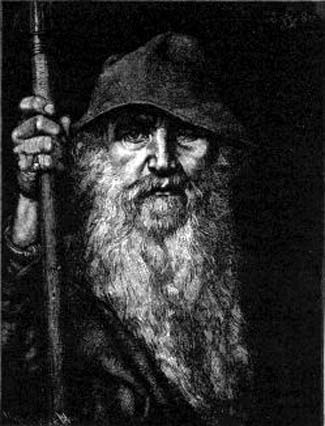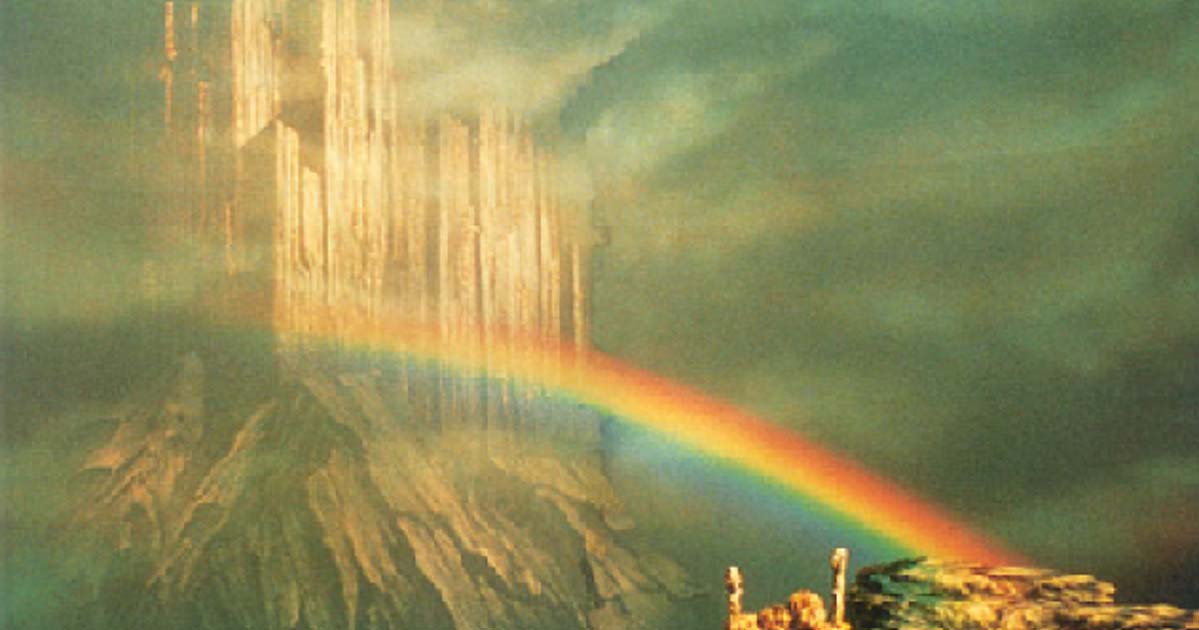If Not Valhalla, Goddess Freyja Welcomed Viking Warriors to Folkvangr
Folkvangr (translated from Old Norse to mean ‘field of the people’, ‘field of the warriors’, or ‘field of the hosts’) is one of a few places where the dead could go to their afterlife in Norse mythology. This field or meadow is believed to be the domain of Freyja, a Vanir, who is one of the most prominent goddesses in Norse mythology. It also became a home for the goddess’ specially selected Viking warriors following their earthly demise.
References to Folkvangr are in literary sources such as the Prose Edda and the Poetic Edda, both of which are believed to have been compiled around the 13th century AD.
Freyja’s Domain
Folkvangr is believed to be ruled over by the goddess Freyja. In Norse mythology, Freyja was a Vanir, the daughter of Njord, and the twin sister of Freyr. She was regarded to be an important goddess, and had power over love, beauty, and fertility.
- The Powerful Valkyries as Icons of Female Force and Fear
- Was It Just a Boss Spying on His Workers? First Viking Age Tower Found in Denmark
- Omen of Odin: The Wild Hunt Thundered Across European Skies, Bringing Calamity and Doom

‘Freyja Seeking Her Husband’ (1852) by Nils Blommér. (Public Domain)
Some have speculated that Freyja evolved from an earlier pagan Germanic goddess, Frija, and that during this process, she was split from another goddess called Frigg, the wife of Odin, and the ‘Queen of the Æsir’. This may be said to further strengthen the significance of Freyja in the Norse belief system.
In any case, the Norse believed that Folkvangr was the home of Freyja. This is one of the four homes owned by goddesses, the others being Fensalir (where Frigg dwells), Helheim (the realm of Hel), and Thrymheim (the abode of Skadi after her father’s death).

Hel and the dog Garm. ( Public Domain ) Hel is a Norse goddess overseeing another of the realms of the afterlife, Helheim.
Folkvangr vs Valhalla
According to Norse mythology, there are several different places where the souls of the dead may go to in the afterlife. The three main ones are as follows, Helheim (meaning ‘home of the goddess Hel’), Valhalla (meaning ‘Hall of the Fallen’), and Folkvangr. Whilst the souls of those who died of either old age or disease would be received in Helheim, those who were slain in battle would travel either to Valhalla or Folkvangr.

Viking army in battle. ( Public Domain )
According to some sources, Freyja was given the right to select half of the warriors who were slain in battle. The souls of these fallen warriors would be taken to Folkvangr. The other half of the dead warriors would be taken by Odin to Valhalla. Others, however, have speculated that Valhalla was reserved for leaders, Folkvangr was the place where the souls of ordinary warriors would end up in.

“Valhalla” (1896) by Max Brückner. (Public Domain)
References to Folkvangr
Reference to the home of Freyja can be found in the Poetic Edda, specifically in the poem Grimnismol (which translates as ‘The Ballad of Grminir’). In this poem, Odin, disguised as Grminir (meaning ‘Hooded / Masked One), travels to the home of King Geirröth as part of a bet with his wife.
Frigg claimed that the king was an inhospitable figure and would torture his guests if he felt that too many were coming to him. Odin dismissed this as a lie, made a wager with Frigg, and visited Geirröth in disguise. One of Frigg’s maid-servants was sent to the king to warn him of a traveling magician who was coming to bewitch him. Therefore, when Odin arrived, Geirröth had him tortured by placing him between two fires, so as to make him speak.
- Born for Valhalla: How Viking Children Learned the Art of War
- The Great Heathen Army: Viking Coalition Becomes an Anglo-Saxon Nightmare
- Halfdan Ragnarsson: Viking Commander and King of Dublin

‘Odin’ (1893) by Georg von Rosen. (Public Domain)
After eight days, the king’s son, Agnar, brought him a horn to drink from, after which the god revealed his identity to the boy. It was during his speech to Agnar that Odin mentions Folkvangr, which is as follows:
“The ninth is Folkvang, where Freyja decrees
Who shall have seats in the hall;
The half of the dead each day does she choose,
And half does Othin have.”
Finally, it may be mentioned that another reference to Folkvangr can be found in Gylfaginning (which translates as ‘The Beguiling of Gylfi’), a book in the Prose Edda. Folkvangr is described in this work in the same manner as the Grimnismol. Nevertheless, this source adds that Freyja has a great hall called Sessrúmnir (meaning ‘Seat Room’) in Folkvangr.

Freyja has a great hall called Sessrúmnir (meaning ‘Seat Room’) in Folkvangr. (CraigHodgesArt/Deviant Art)
Top Image: ‘Folkvangr.’ Source: Mitch Williamson
By Wu Mingren
References
Anon., The Poetic Edda [Online]
[Bellows, H. A. (trans.), 1936. The Poetic Edda.]
Available at: http://www.sacred-texts.com/neu/poe/index.htm
earthandstarryheaven.com, 2015. Folkvangr and Freyja. [Online]
Available at: https://earthandstarryheaven.com/2015/12/09/folkvangr/
Kane, N., 2016. Folkvangr, Freyja welcomes you to the Field of the Host. [Online]
Available at: http://spangenhelm.com/folkvangr-freyjas-field-warriors/
McCoy, D., 2018. Freya. [Online]
Available at: https://norse-mythology.org/gods-and-creatures/the-vanir-gods-and-goddesses/freya/
Mike S, 2018. Freyja – The lady of Folkvangr. [Online]
Available at: http://irminfolk.com/freyja-the-lady-of-folkvangr/
Snorri Sturluson, The Prose Edda [Online]
[Brodeur, A. G. (trans.), 1916. Sturluson’s The Prose Edda.]
Available at: http://www.sacred-texts.com/neu/pre/index.htm
The Editors of Encyclopædia Britannica, 2018. Freyja. [Online]
Available at: https://www.britannica.com/topic/Freyja




















Comments
When English replaced the Latin names for the week, they renamed Venus' Day Freya Day (Friday). Considering the origin of Venus/Aphrodite in the Mediterranean interpretation of the PIE pantheon, I can see why Freya's origins would be so fractured.